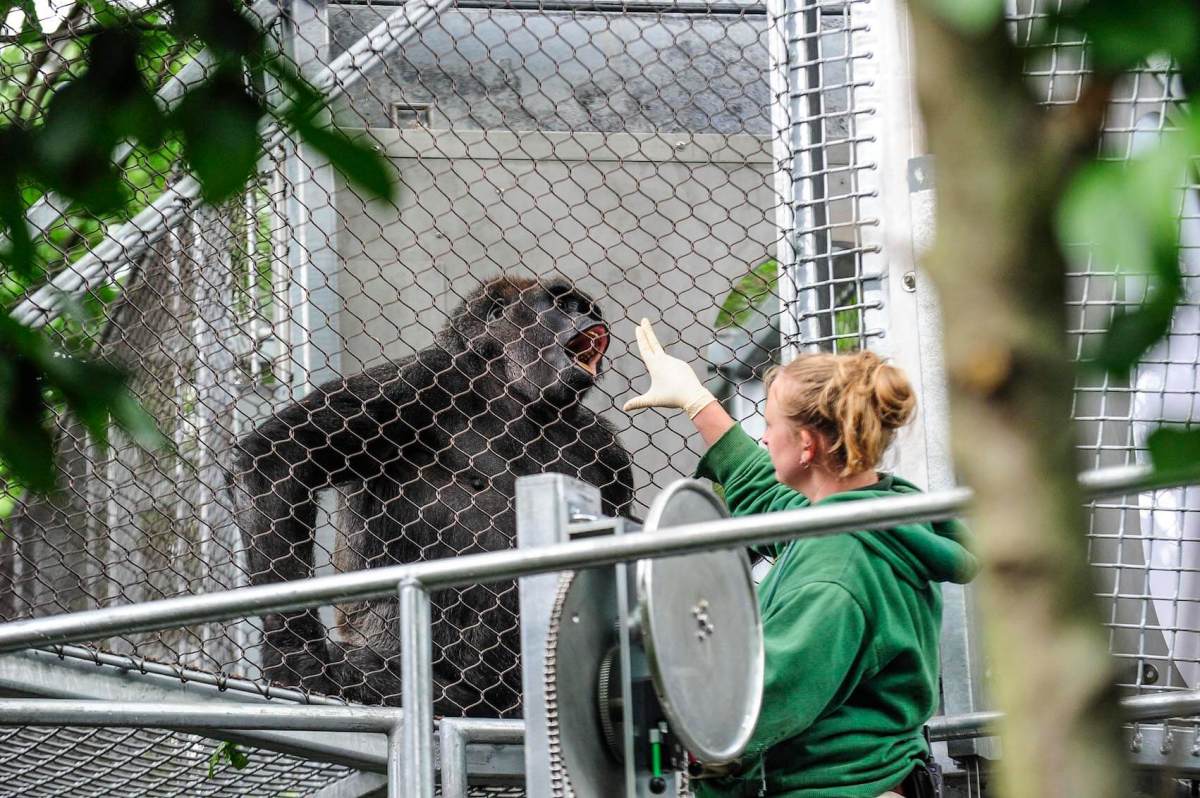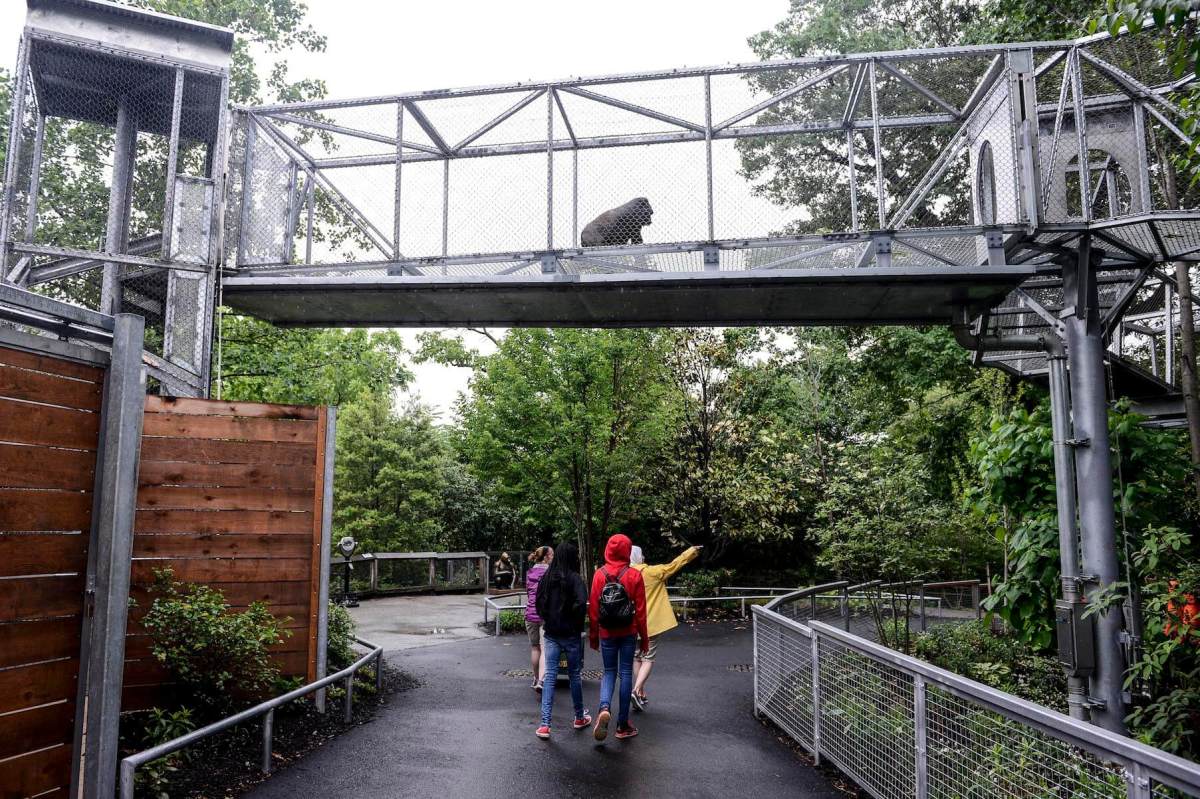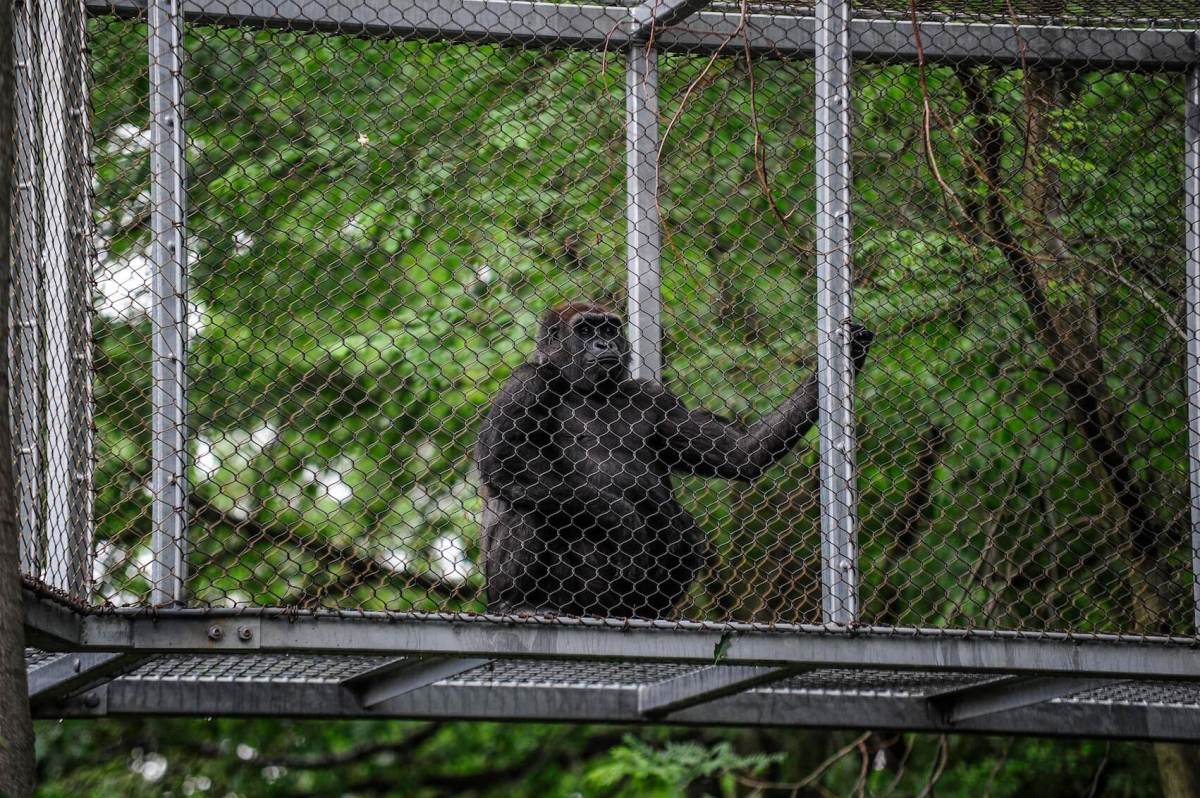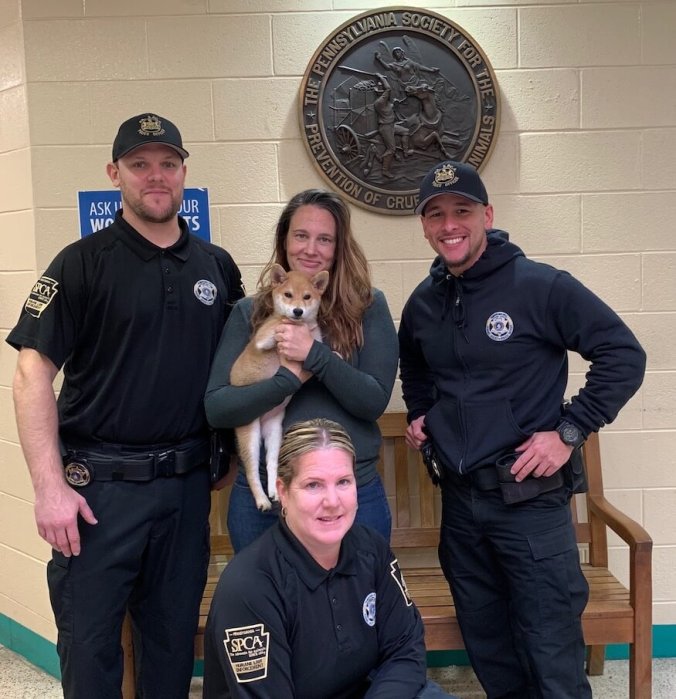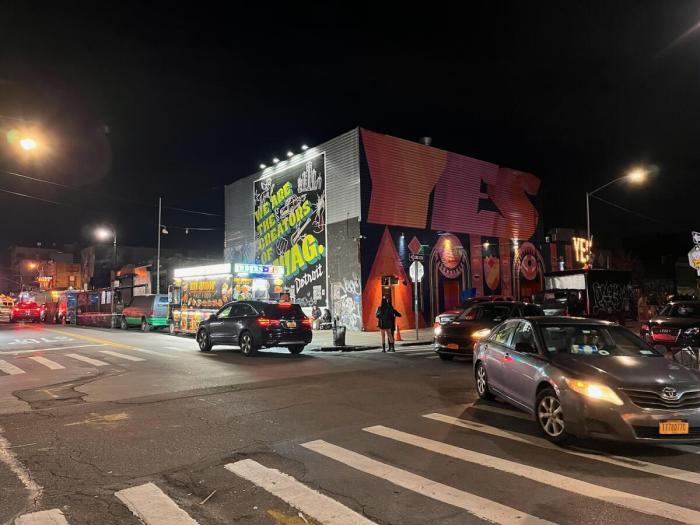When it comes to gorillas, girls are more adventurous.
That’s the caseat the Philadelphia Zoo at least, where two female gorillas have surprised their handlers with their enthusiasm for an elevated trail that gives them towering views of the patrons that are supposed to be looking at them. “Gorillas are really interested in people,” said Kristen Farley-Rambo, the primary gorilla keeper at the zoo.
The zoo last month opened its Gorilla Treeway, a 300-foot long enclosed trail that passes from their enclosure and into a bank of trees.
When a gorilla uses it, it’s a scene that stopped crowds in their tracks on Tuesday, despite the rain. That’s if they animal uses it.
The boys — men, really, when you are talking about silverback western lowland gorillas — have been a little more shy about the trail.
“We always knew with apes that personality would play a big role,” said Kevin Murphy, the chief curator at the zoo.
A particularly rambunctious male Kuchimba hasn’t taken full advantage of the opportunity to explore.
“That particular personality surprised us,” Murphy said.
The gorilla path is part of a network of four trails that serve — separately — orangutans, tigers, and small primates. The trails connect, and in some cases run parallel to each other. That potentially gives the animals the opportunity to see species they might not normally see, and potentially helps them stay mentally alert. This is innovative stuff, a far cry from the bare walls and feces-encrusted floors of yesterday’s zoos.
Six other zoos have made official visits to see the the trail system. Others have made informal trips to check it out, part of a trend in zoo design that may help animals escape the boredom of a confined space. In Dallas, a zoo exhibit allows giraffes, elephants and impalas to share a common space.
At the National Zoo in Washington D.C. the O-Line allows orangutans to travel between two exhibits.
Philadelphia Zoo officials believe that the trails will improve the mental and physical lives of the animals. They’ve hired a researcher to see if they can effectively measure improvements in the animals’ well being. The gorillas aren’t the only ones that like to people-watch. Other animals do too, and that’s a bit different from the experience of a traditional zoo exhibit, where the animal has little relief from the eyes of patrons. “We find that all the time,” Murphy said. “The animals find a location in the trails where they watch for people.
It wouldn’t be true to say that the trails allow patrons to be closer to the gorillas than ever, because in their enclosure, a thick plexiglass separates them from spectators.
But there is something different about the trails.
“Not having that glass gives you that closeness feel,” Farley-Rambo said.



